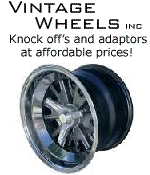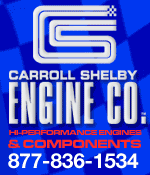I found this to be interesting reading and does make sense.
DYNO THOUGHTS AND HP LOSSES
After reading various articles in numerous publications on dynos and horsepower, I feel I should put forth a few observations:
Chassis dynos are great tuning aids but they only give a approximation of power output as some of the important variables are not accurately controlled. Certain magazines seem to think that results obtained from chassis dynos are the gospel. They are not. In one recent independent test, hp figures varied by 11% simply by doing the runs in different gears and in another test, results varied by almost 4 % by doing the runs with a different wheel/tire combination. Tire alignment has been shown to affect results up to 3% as well. Note that Engine hp DID NOT change here yet the dyno recorded an increase in hp at the wheels. One can only conclude that inaccurate moments of inertia and correction factors are being used.
On intercooled, turbo cars, there is usually insufficient airflow to ensure accurate results due to charge temperature variation which can be substantial. Even coolant temperatures may not stay down during the run which can affect power outputs considerably. The rate of acceleration is also important on turbo cars to be sure that the boost is not lagging the engine rpm. With RPM climbing too quickly, the boost has not reached a peak value so the hp figure is again inaccurate. Turbo cars should therefore be tested in top gear.
Without proper temperature stability and accurate moments of inertia on the rotating components, there CANNOT be accurate results as the scientific method is no longer being applied.
When all things are kept the same between runs and you get a tangible gain, it is a gain at least. How much, is open for discussion. It is important to note that as the
oil temperatures in the engine, transmission and differential increase, friction usually decreases. This manifests itself as an increase in power at the rollers on each subsequent test. This factor should be accounted for when doing back to back runs. It may look like you are gaining some power on each run by making other changes when in fact this is due to reduced
oil viscosity. When using a chassis dyno, always use the same gear and tires and wheels and start the runs from the same speed or RPM. Re-baseline periodically to see what temperature increases have done to power output.
Chassis dynos are quick and easy to hook up but have many of the above failings. They do not possess the accuracy of a properly calibrated engine dyno which has a more carefully controlled environment and condition set. Obviously, most non-professionals don't want to be yanking engines to use an engine dyno so chassis dynos do have their place.
Flywheel vs. Wheel HP
As most people know, there are power losses through the drive train so wheel hp is always lower than flywheel hp. Front wheel drive cars with transverse engines tend to be more efficient than most rear drive configurations due to the layout of components. However most publications overestimate these losses considerably.
Most rear drive cars have a 1 to 1, 4th gear which means that the power path goes directly through the main shaft of the transmission. The only losses here are bearing drag which is less than 0.5% and the viscous drag of the gears running through the
oil which is about 1% with hot oil. Indeed, published data indicates a transmission efficiency of 98 to 98.5% for conventional transmissions in 4th gear.
Losses within the drive shaft account for about 0.5% if they are properly aligned, balanced and with fresh U-joints.
Differential losses in the commonly used Hypoid type gear set is in the order of 6 to 10%.
The worst scenario case for a rear drive setup is on the order of 12.5% in 4th gear, not the 20 -25% often published. If 25% was being lost in the drive train, the oil would boil in the differential housing in short order and aluminum transmission cases would fatigue and break from the temperatures generated. On a 200 hp engine, something on the order of 37,000 watts would have to be dissipated out of the transmission and differential housings. Obviously, this is not the case.
Transverse, front drive transaxles usually have no direct lockup gears and no 1 to 1 ratio, however, since the torque path is never turned 90 degrees as in the rear drive setup and efficient helical gears are usually employed for the final drive set, losses are more on the order of 6 to 9 percent in the upper ratios.
Tire pressure and wheel alignment can have very significant effects on losses at the rollers. Tire pressures should be set the same between each test. Tire rolling resistance varies inversely with speed, another factor not taken into account by most chassis dynos when applying phantom flywheel hp formulas.
Comparing the Numbers
Many novices are quick to compare hp numbers between chassis and engine dynos and come up with all sorts of wild conclusions about drive train losses. These comparisons are essentially meaningless. Inertial dynos are based on the sound scientific principle of accelerating a certain mass with a known moment of inertia over a given time. The rate of acceleration of that mass and moment is a result of the force applied (torque). If the RPM is known, HP can be calculated. On an inertial chassis dyno, it is virtually impossible to calculate the moment of inertia of every tire, wheel, gear, joint , axle and shaft in the power train between the crankshaft and roller, therefore its results cannot offer an accurate HP figure. Inertial engine dynos offer a very accurate figure if properly calibrated as only the flywheel's moment of inertia needs to be calculated and added to that of the billet. Water brake or eddy current dynos generally measure force (torque) directly through a ram or strain gauge so moments of inertia are not important on these in fully loaded tests.
Concluding that there was a 25% drive train loss by comparing HP achieved on an inertial chassis dyno and that obtained on an engine dyno is fundamentally flawed in that the chassis dyno numbers are highly suspect in the first place.
For you doubters out there:
http://www.pumaracing.co.uk/power
Bud





















 Linear Mode
Linear Mode



